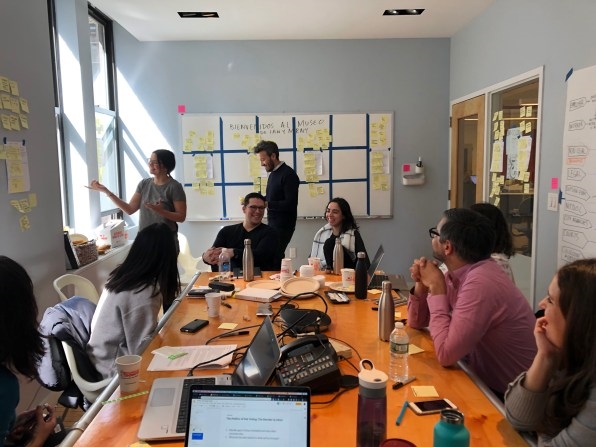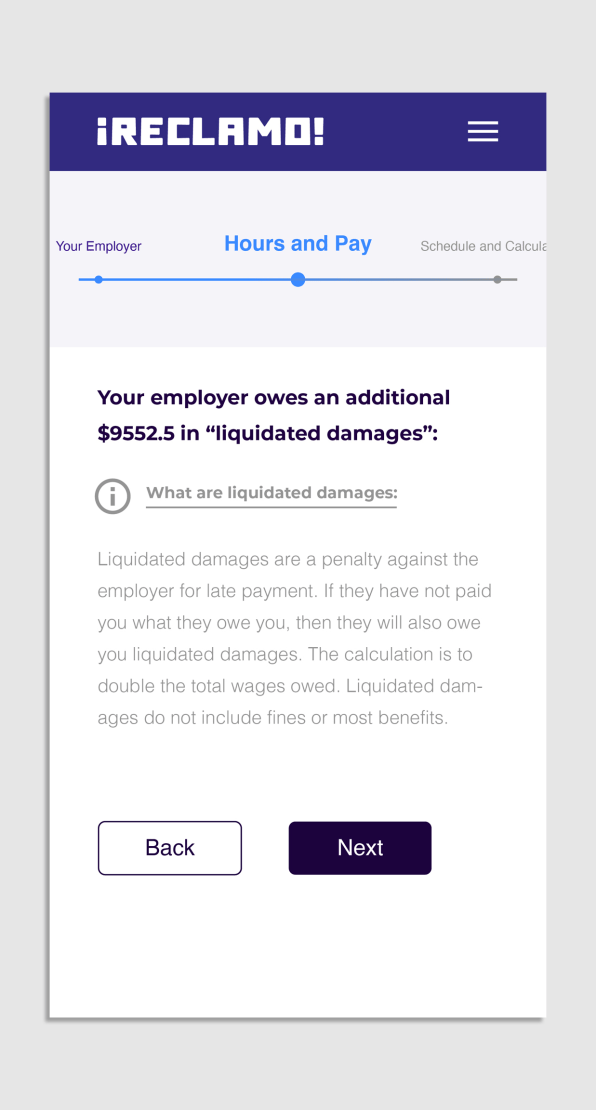Wage theft is rampant amongst construction workers. This app helps them get their money back
The questionnaire is part of ¡Reclamo!, a digital tool for screening and filing wage theft complaints with the government. Written at a seventh-grade reading level in both English and Spanish, the tool is targeted at the undocumented workers who make up much of the construction industry’s workforce. These workers regularly have their wages stolen, partly because of their immigration status and partly because of bad actors in the industry. The questionnaire in the tool helps them document this theft and craft a legally sound complaint that can be submitted to the labor department. Since its soft launch in October, ¡Reclamo! has been used to claim more than $1 million in stolen wages.
“This is a longstanding issue that immigrants, low-wage workers, and women are disproportionately affected by,” says Rodrigo Camarena, director of Justicia Lab, the immigrant justice technology incubator that created the tool in coordination with legal experts from the immigrant rights and advocacy group Make the Road New York. “Wage theft ranges from not being paid minimum wage to straight up not being paid, or showing up to a job and the person that hired you suddenly isn’t there anymore.”

Under federal law all workers, documented or not, are afforded certain protections, including against wage theft. But Camarena says few undocumented workers know they have recourse if their wages are stolen. And their wages are stolen a lot.
A 2017 study by the Economic Policy Institute found that in the 10 most populous states wage theft among minimum wage workers totaled $8 billion a year. Extrapolating out across the rest of the country and accounting for other forms of wage theft, the researchers estimate more than $50 billion is stolen from workers annually.
“It’s the largest form of theft in this country,” Camarena says.
These issues are most acute in the U.S. construction industry, which relies heavily on undocumented workers to do the low wage and often dangerous work of constructing buildings and infrastructure.
“They’re part of this global precarious labor regime that’s really defined by wage scales that are at the lowest in the whole economy and are typically assigned to what is colloquially referred to as quote-unquote unskilled workers,” says Michelle Franco, assistant professor of landscape architecture at Ohio State University who studies the social and cultural factors underpinning the devaluation of immigrant workers in building trades. “The work itself is rather dangerous, just physically dangerous and risky, but also detrimental to health in many ways.”
The first iteration of the tool focuses on New York state’s building and construction sector. Accessible in English and Spanish, the app and its questionnaire was purposely written in straightforward terms, and without any of the Latin or other obscure legal terminology that clogs the forms one would need to file a complaint with the state labor department. Nonprofits in the state that work with immigrants are granted free access to the tool.
Katherine De Leon is a workplace justice advocate at Make the Road New York, and she says the majority of wage theft cases her organization sees are in the construction industry. She’s been using ¡Reclamo! to help workers fight back against wage theft, which she says has streamlined claims. As a paralegal, she has done this work the hard way as well, guiding workers through the dense legalese and specific questioning of complaint forms required by state labor departments to process claims. “It’s asking for all of this information and for workers it can be really intimidating,” she says. “With ¡Reclamo! it’s very straightforward.”

The tool was designed to be used by non-lawyers and advocates who can help workers enter information and determine whether they have a legal claim. After going through a series of questions, the tool creates a calculation of wages that have been stolen and creates the formal document needed to either confront an employer about illegal practices or submit a complaint to the state labor department.
Most workers don’t have to go the route of launching a full investigation with the state, which Camarena says can take up to a year. A complaint letter sent to the offending employer is often enough to get wages returned. The tool creates a draft of that kind of letter, populated by a worker’s own non-payment evidence and citing state and federal legislation, to give the complaint legal heft.
If that doesn’t work, the tool can also step up the offense, creating the documents needed to file complaints and launch investigations.
Camarena says ¡Reclamo! is intended to be an accessible tool for helping workers get what they’re owed. But it’s also trying to collect information that can lead to more systemic change and the elimination of wage theft. “It’s aiming to gather data at scale to inform policy, to inform organizing, to inform strategic enforcement,” Camarena says. “We can collectively identify patterns amongst employers, amongst industries, and in certain geographies to inform broader advocacy efforts.”
Franco calls the tool “fantastic,” adding: “Obviously it won’t solve all of these issues. It’s too large scale of an issue and it’s too entrenched in the economics of contemporary architectural production to be met in a single move. But I think this move is really powerful and necessary.”
The first version of the tool prioritizes the construction sector in New York, but Camarena says Justicia Lab hopes to expand it out to other states and to industries like food, service, and agriculture, where wage theft is just as rampant. It’s an attempt to put power in the hands of exploited workers who previously believed they were powerless to act. “What we’re trying to do and what we’ve done is successfully show that the model works,” Camarena says. “We don’t have to just throw more lawyers at the problem.”
(8)



